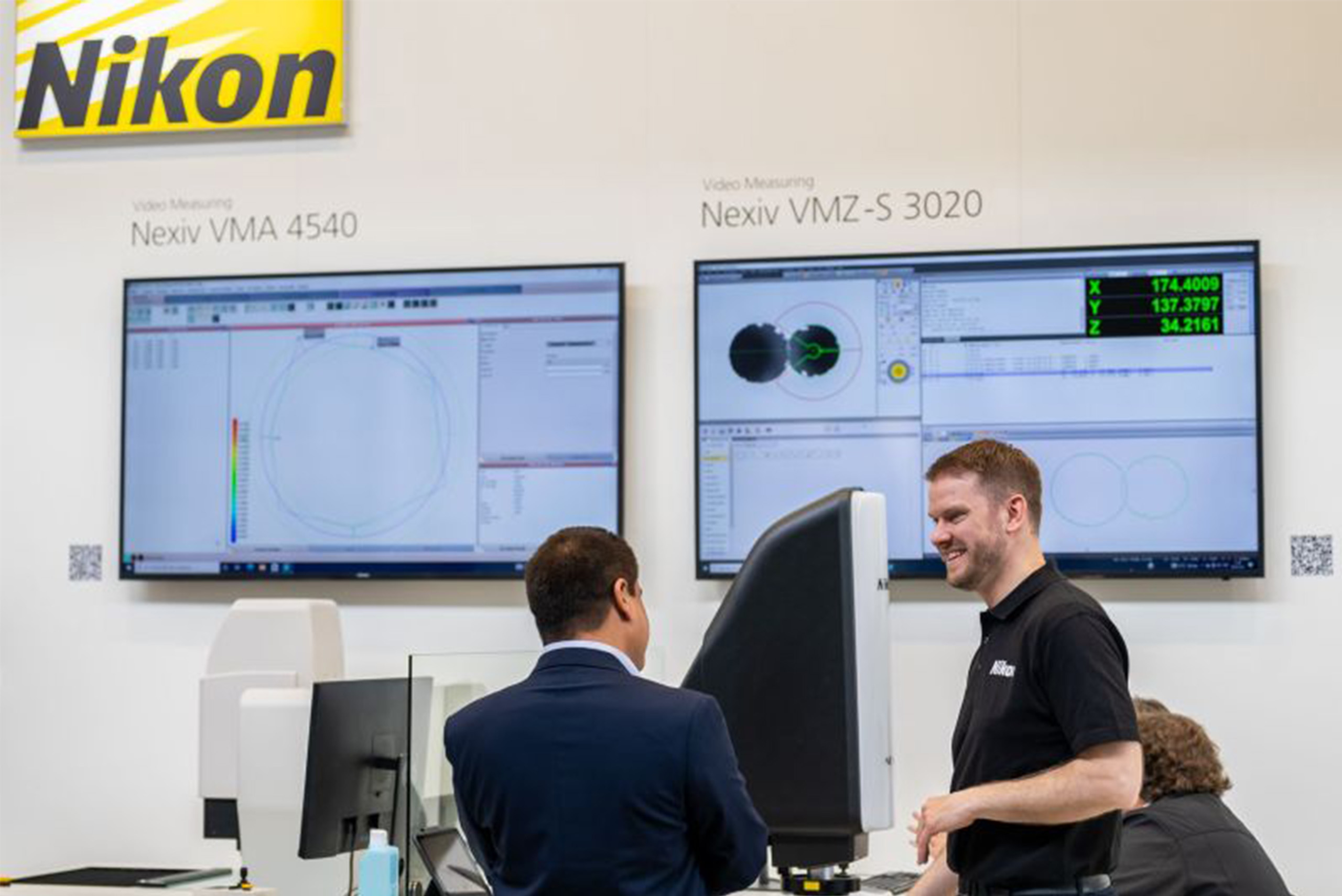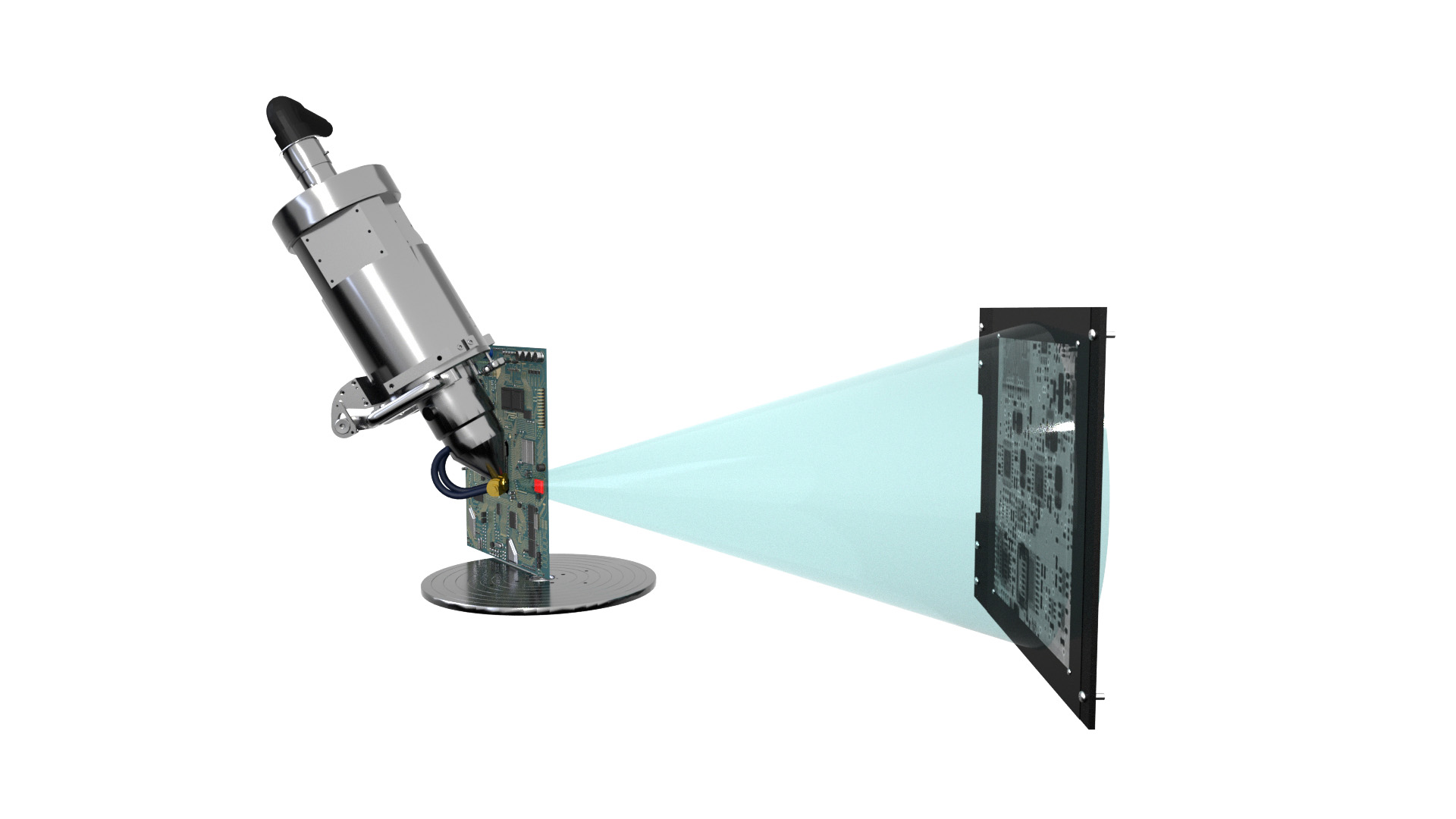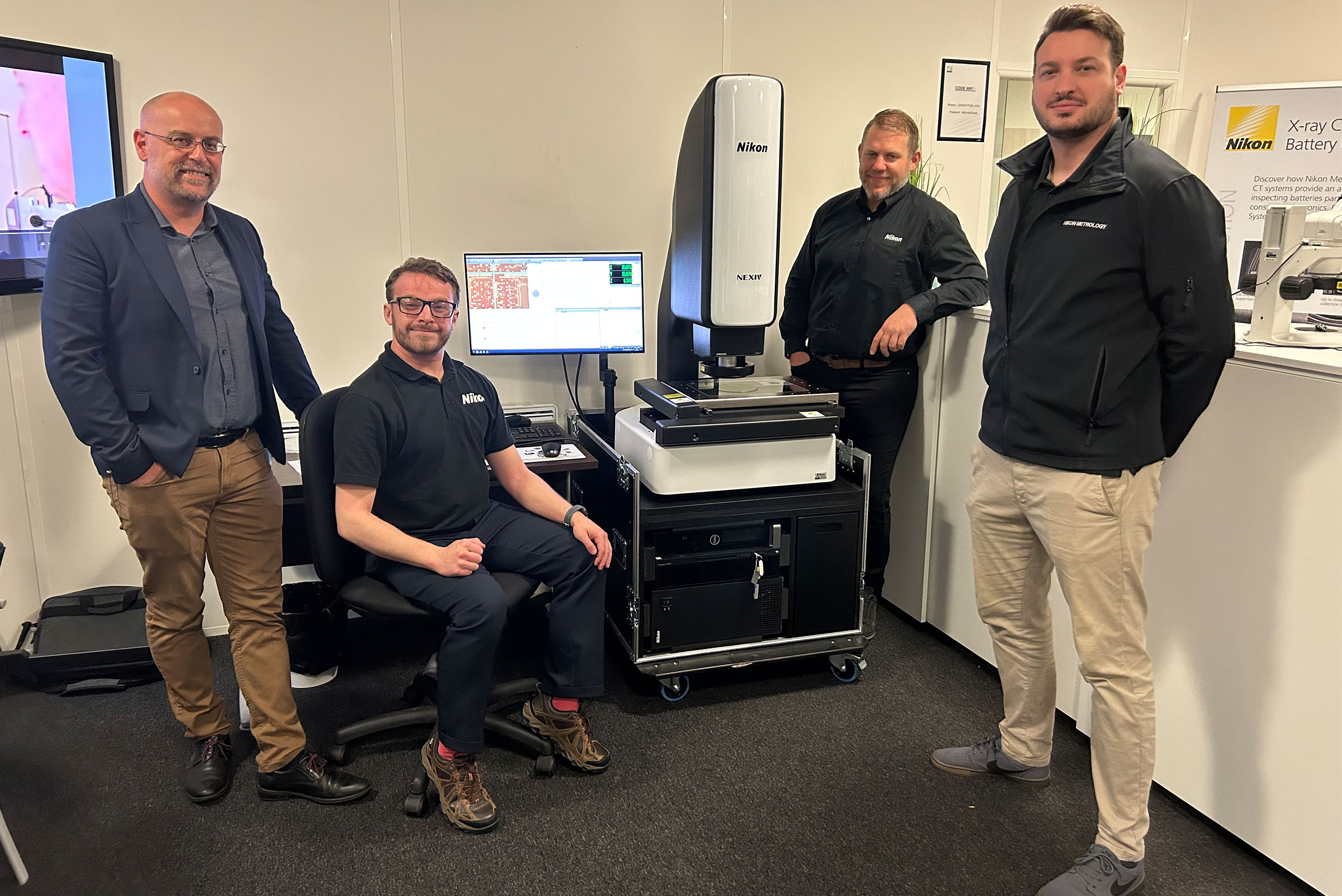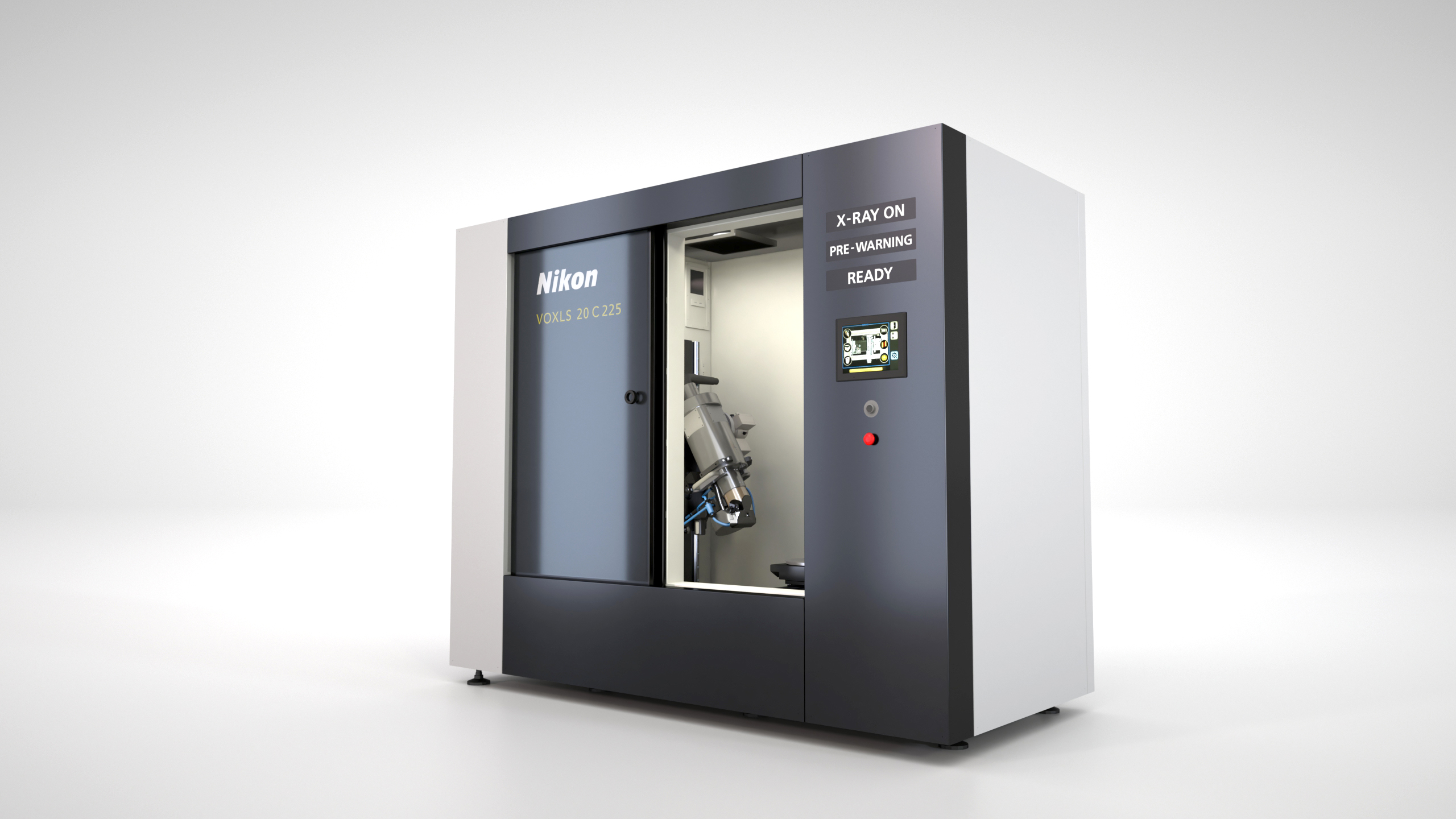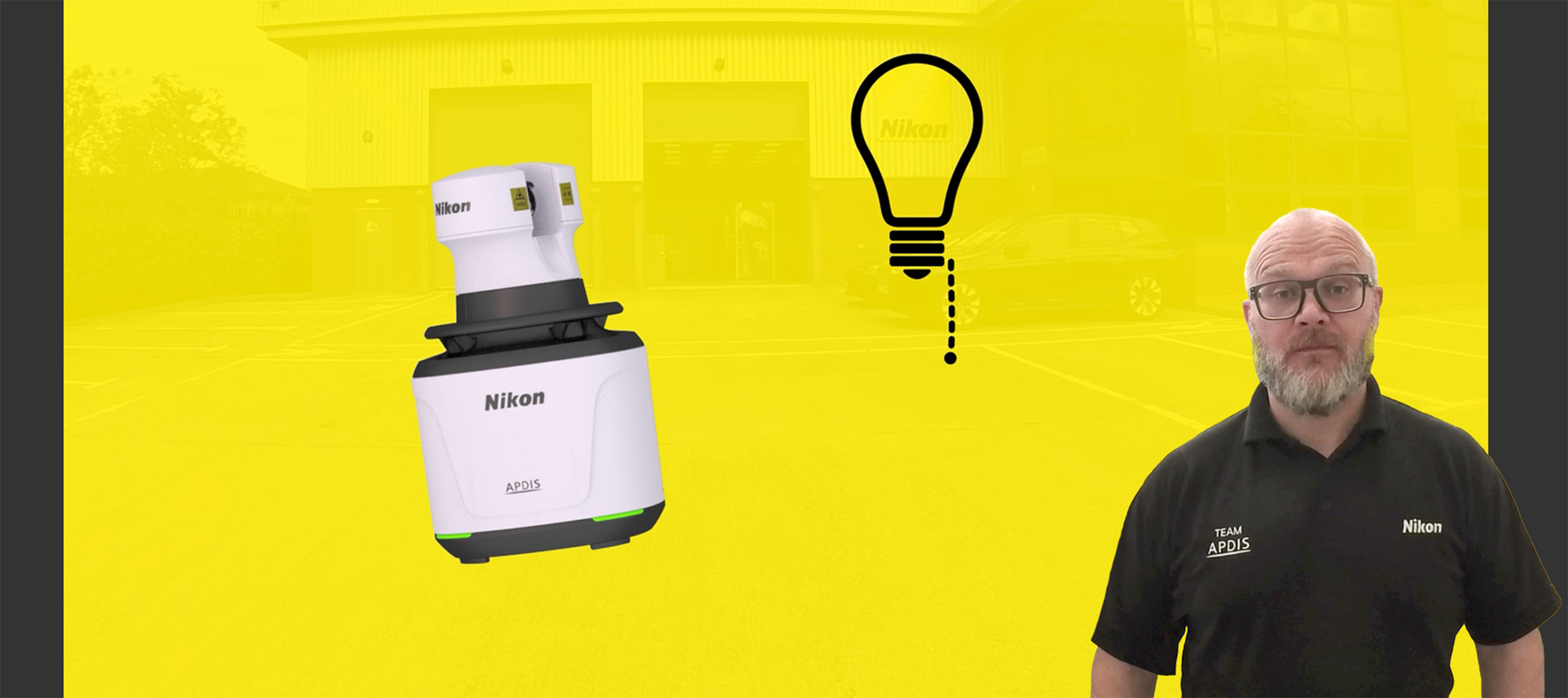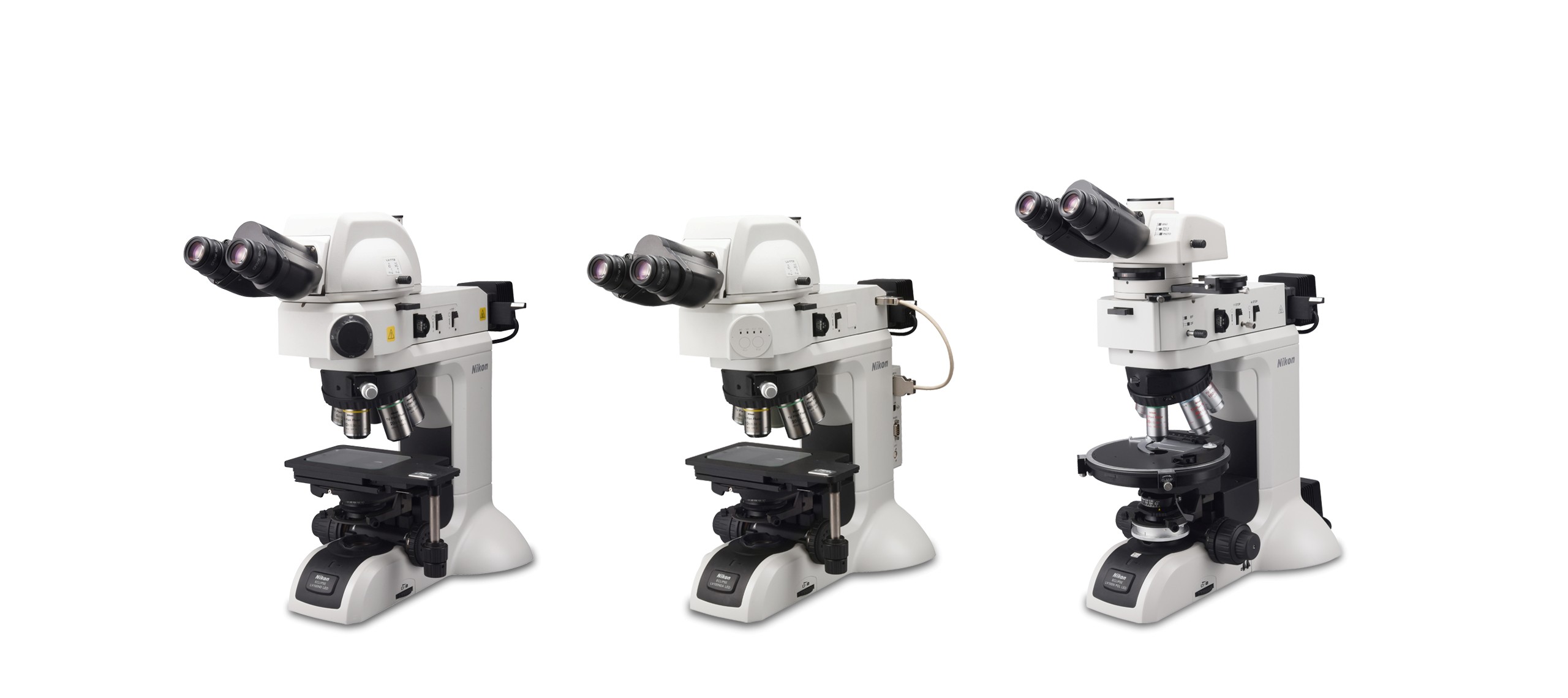Once upon a time, aerospace metrology professionals needed to make some hard choices when setting up their measurements. These decisions were driven by many factors, including the size of the part or parts, the type of feature or features requiring measurement, the amount of data needed to achieve statistical significance, and more. Technicians were often required to utilize complicated, expensive, and fragile jigs and fixtures to accurately measure their large assemblies. All of this tended to make measurement inefficient and costly, not to mention slow—a poor, suboptimal situation to say the least.
An important solution to these issues has emerged in the form of Laser Radar (LR) technology, represented most clearly by Nikon Metrology’s new APDIS Laser Radar solution. APDIS is a remarkably flexible piece of equipment that has been designed to work in a variety of manufacturing sectors. Few applications, however, are improved by APDIS more than those found in aerospace.
Lasers and Mirrors
An LR system provides exceptional support for large-volume, close-tolerance manufacturing, inspection, and assembly applications. The system employs an eye-safe coherent, frequency-modulated laser beam steered by a high-precision pointing mirror onto the tested part. As the light from the laser travels to and from the target, the phase shift is detected as part of a heterodyne interferometer producing the most sensitive radar possible. An onboard reference signal maintains the high accuracy of this distance measurement. The precise measurement of the returning laser signal coupled with the mirror position is how the LR system assesses the three-dimensional characteristics of the part under test.
The nature of LR means that these compact systems are particularly well-suited to large-volume measurement applications. LR is a noncontact form of measurement and, given appropriate line-of-sight, it has few limitations in terms of the size of parts to be inspected. It also accommodates measurement either on or off the production line due to a wide working temperature range and IP-54 protection. Another notable advantage of LR is that it integrates nicely with the robotics that power the efficiency and throughput requirements that define the modern manufacturing industry, and it can run completely automatically—another big plus from the standpoint of efficiency and time savings.
APDIS – Enhanced Metrology
APDIS offers best-in-class LR functionality. From a physical perspective, it is 25 percent shorter and 40 percent lighter than previous Nikon Metrology LR systems. APDIS includes standard 3.5-in. threaded mounts to interface with off-the-shelf stand designs, and improved robot-mounting functionality, too. For automated and shop floor environments, indicator lights give system feedback from all directions. It has been redesigned internally as well, starting with Nikon optics, which permits improved focus performance and up to four times better video resolution. This gives the operator a much clearer view of the parts being measured.
A major change in APDIS vs. earlier Nikon Metrology LR models is the Enhanced Feature Scan technology, which permits up to doubling of the measuring speed and advances in measurement sequencing. This yields considerable productivity increases, better throughput, and more data acquisition in a similar amount of time. It all means productivity improvement as well as enhanced overall data quality for users.
Finally, APDIS nicely interfaces with a wide variety of third-party data-analysis software, allowing operators to work in a software environment to which they have become accustomed. The amount of acquired raw data is robust (up to 1,000 points per second typically) yet is easily analyzed within these platforms.
APDIS in Aerospace
Aerospace manufacturing technicians have always operated in a very different environment than their brethren within the automotive sector. Whereas world-class car manufacturers have strived for decades to achieve automated, in-line measurement with a focus on speed, efficiency, and accuracy, in aerospace the goal was centered on exceptional accuracy first and foremost. Metrologists in the sector achieved this by measuring large-volume assemblies held in place with intricate fixtures, or employing skilled technicians to laboriously measure parts manually, processes which tended to be slow. Today, however, aerospace is taking a page from automotive by picking up the pace of measurement without losing precision.
“The goal is to reduce the amount of dead time, which is measurement time—because ultimately that’s what metrology is, it’s dead time, but a necessary evil for quality control,” says Paul Lightowler, Nikon Metrology’s Global Product Manager for Laser Radar. “If you can reduce that time, that’s a benefit because you can measure more without stopping production. The aerospace product represents a wonderfully advanced technology, but it has tended to be made in a rather archaic way. Automotive manufacturing processes, on the other hand, are second to none. Thousands and thousands of cars are produced every day to relatively tight tolerances, employing robotics and fully automated lines. A decade or more ago, I would take aerospace people to automotive plants and they were just amazed that there was nobody there, just forests of robots. Aerospace is now picking up on that, saying, ‘OK, we need to automate.’ And that automation is not just in the actual manufacturing processes—it’s in the metrology function as well. That’s where we come in, and APDIS is the logical extension of that for aerospace. It can run as a fully automatic system.”
Increasing Measurement Speed, Reducing Costs and Improving Safety Through Automation
The unique functionality of APDIS to measure large components automatically and accurately encourages such cross-industry benchmarking for aerospace manufacturers looking to incorporate automation into their production flow. It permits accuracy measurements up to a 50-meter radius, which is ideal for aerospace. Because it requires no targets, probes, nor adapters, set-ups are fast and easy. APDIS warms up and is ready to measure in 15 minutes. All of that means significant and critical improvements in measurement speed.
“When APDIS is running completely automatically, the manufacturer is not only saving time, but also saving labor,” says Lightowler. “For aerospace, that means greater efficiency and consistency of the measurement as well as a reduction in labor. You don’t necessarily need to have a skilled person to do the measurements anymore. With laser trackers or any sort of hand-held metrology device, you need to have a certain amount of skill to be able to take those measurements consistently, but APDIS is more about the set up and then simply pressing a button to run the routine.”
The comparison to laser trackers is apt. For large aerospace OEMs, replacing tracker setups with LR have taken eight-hour measurement sessions requiring three people down to two hours or less with a single person. That is not a criticism of trackers, which certainly have their place. However, when you have large-scale measurement applications involving parts that are, perhaps, 20 feet in the air as you would typically find in aerospace, the technician might need fixtures and ladders to take a measurement using a tracker. That means climbing the ladder, taking the measurement, and coming back down, all of which takes time and is ultimately a safety risk for the operator. With LR, on the other hand, the operator can take measurements of parts high in the air from the ground; just a few keystrokes and the measurement is complete.
Looking Ahead
The science of metrology has a positive momentum that regularly allows users to do better and more efficient work. Nikon Metrology’s MV331 Laser Radar, for example, was a well-received product that functioned effectively for shop-floor automotive applications and which demonstrated the ability to integrate nicely with robotic self-driving vehicles (SDVs) for advance manufacturing and assembly applications within aerospace. But APDIS offers upgrades in speed, reliability and usability over the MV331 that built on its already significant advantages, making it an even more powerful technology integrated with SDVs.
Many of these kinds of lessons learned about automation and its integration on the shop floor have long-term implications. Industry leaders such as Nikon Metrology understand that learning can never stop within manufacturing, and advancements build on advancements to help push the aerospace sector forward.
“With APDIS having this brand-new design, it gives an extremely good platform to build for the generation following, and the generation following that, and the generation following that,” says Lightowler. “So, it’s all building on this brand-new construction and brand-new design that is creating a revolution in shop floor metrology.”
